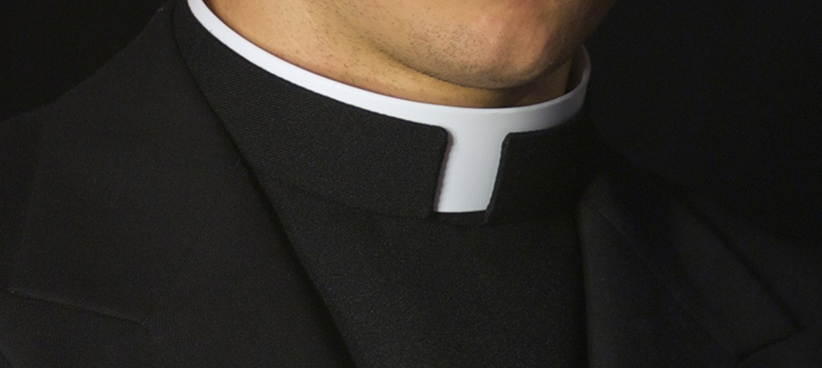The Diaconate and the Collar
The debate of when and when not to wear clerics
Deacon Dominic Cerrato 4
About 27 years ago, I was meeting with my bishop just prior to ordination. I would be the first permanent deacon ordained for the Diocese of Steubenville. Since no precedence had been set, I asked him whether I should wear clerics in the exercise of my ministry. In response, he asked me what I thought. Without hesitation, I said, “Clerics.” He agreed and, from that day to this, because I’ve always done church work, I’ve worn clerics. While the issue of clerical attire far exceeds the limited size of my column, let me hazard just a few observations.
Human beings, unlike animals, are capable of symbolic consciousness. This is to say that, by virtue of our intellect, we possess the capacity to move beyond a symbol to its deeper meaning. So, when a man points, his dog looks at his finger while human beings look at that which the finger points. Indeed, the whole of our sacramental system is based on symbolic consciousness. Clerical attire is sacramental and, like all sacramentals, points beyond itself to a deeper reality. Understanding symbols in the manner that the Church does means we can participate more fully and, in doing so, become a sign for others.
While canon law requires clergy to wear distinctive garb (cf. Code of Canon Law, Canon 284), permanent deacons aren’t obligated to do so (cf. Canon 288). The reason for this can be found in a particular law. Accordingly, The National Directory for the Formation, Ministry, and Life of Permanent Deacons in the United States maintains that this exemption arises from the fact that permanent deacons are “prominent and active in secular professions” (No. 94). This means that, when at their secular job, deacons ought not wear clerical attire. To apply this restriction while exercising diaconal ministry is to stretch it beyond its intended scope as stated in the directory.
The absence of clerical attire by deacons sends the unspoken message that deacons aren’t clergy, diminishing not only the diaconate in the broader Catholic imagination but also an ecclesial presence. Bear in mind that, while priests wear clerics, clerics aren’t exclusively priestly attire. Transitional deacons wear them along with non-ordained religious brothers. Even laymen wear them, and we call these men “seminarians.” Moreover, if transitional deacons wear clerics and permanent deacons don’t, we’ve created a perception of two classes of deacons. To do so undercuts the unity of the diaconate as one single grade of holy orders.
Some may object, indicating that permanent deacons wearing clerics will cause confusion among other members of the clergy and the laity. This can be called the “confusion argument.” But is this argument really valid? If the issue is confusion, why aren’t these other exceptions (transitional deacons, religious brothers and seminarians) also causing confusion? In all the years I’ve been ordained, I can count on a handful of Sundays where, while vested, I wasn’t called “Father.” Taking the confusion argument to its natural conclusion based on this data point, deacons ought not to wear their liturgical vestments at Mass. It is important to note that canon law calls clerical attire “ecclesiastical garb” (cf. Canon 284). The symbol then is ecclesial in nature, pointing beyond itself to the Church and making the Church present. We can either persist in the misperception that this is only priestly garb, or correct the misperception by allowing deacons, in the exercise of their ministry, to reveal more fully who they are — that is, the Church manifest in sacred ecclesial service.
DEACON DOMINIC CERRATO, Ph.D., is editor of The Deacon and director of diaconal formation for the Diocese of Joliet, Illinois. He is the founder of Diaconal Ministries, where he gives national presentations and retreats to deacons and diaconal candidates.






Comments are closed.